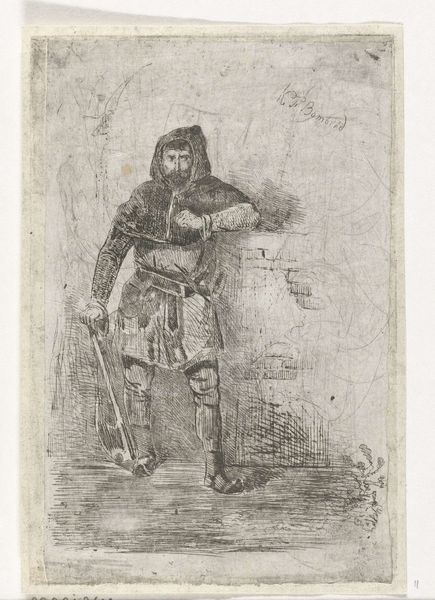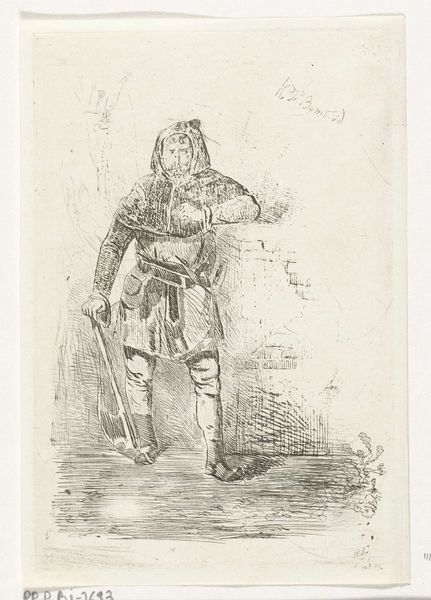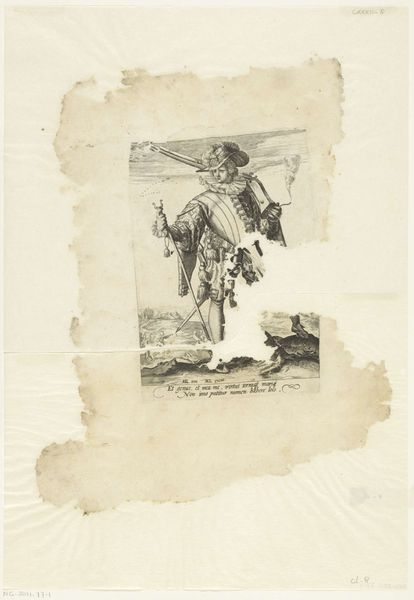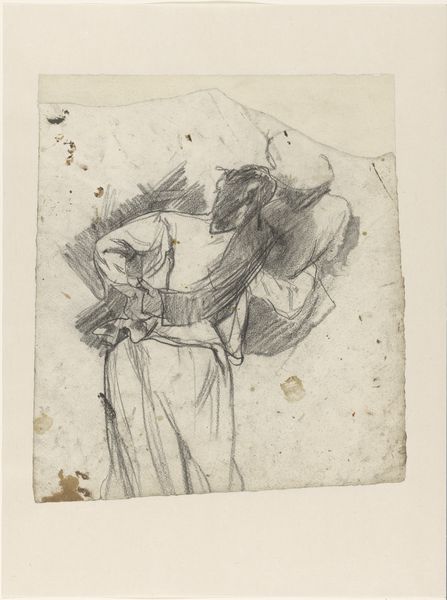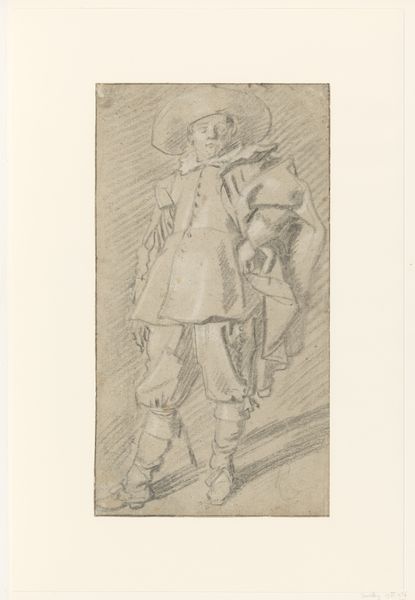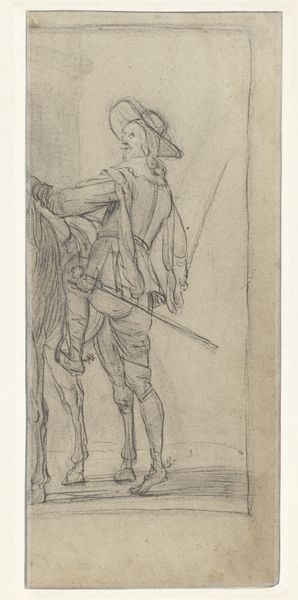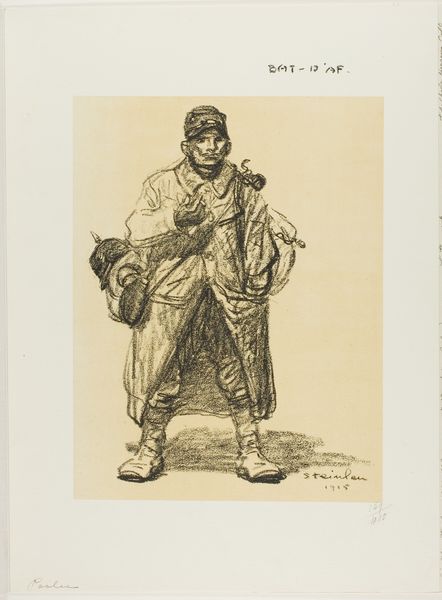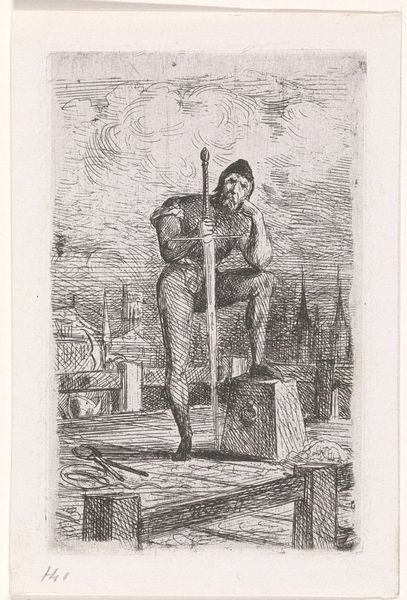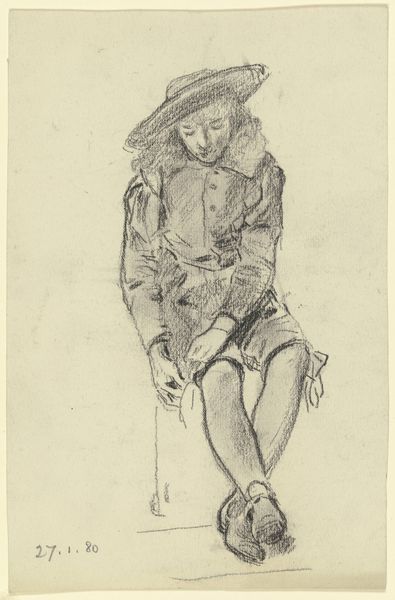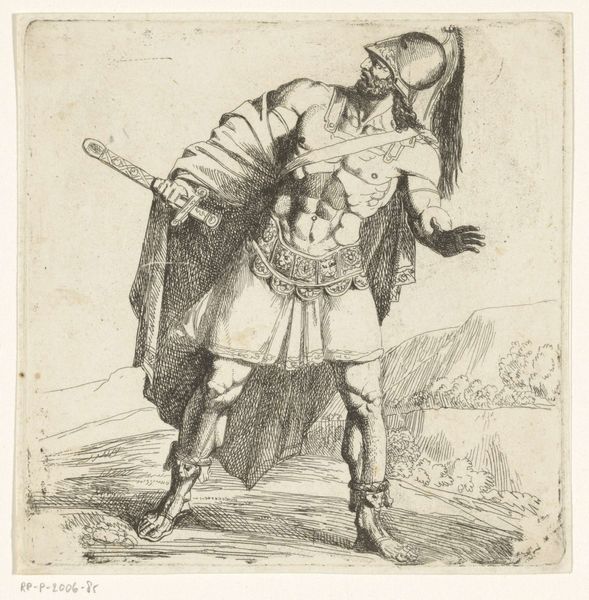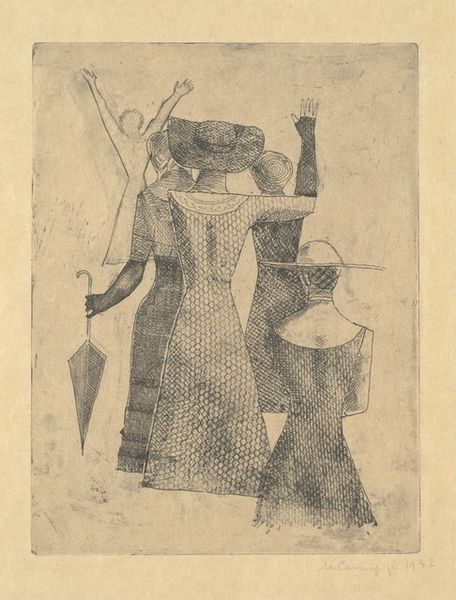
drawing, ink, pen
#
portrait
#
drawing
#
amateur sketch
#
quirky sketch
#
pen sketch
#
pencil sketch
#
figuration
#
personal sketchbook
#
ink
#
sketchwork
#
ink drawing experimentation
#
pen-ink sketch
#
sketchbook drawing
#
pen
#
genre-painting
#
sketchbook art
Dimensions: height 150 mm, width 98 mm
Copyright: Rijks Museum: Open Domain
This is Karel Frederik Bombled's "Soldaat met bijl," made using the etching process sometime in the 19th century. Etching involves drawing with a sharp needle on a wax-coated metal plate, which is then bathed in acid. The acid bites into the exposed lines, creating an image that can be inked and printed. Look closely, and you can see the characteristics of this process: the fineness of the lines, the way they create tone through density, and the slightly irregular quality, all a result of the artist’s hand and the corrosive action of the acid. The composition is sparse and sketched; the figure is roughly centered, and the subtle shading suggests depth and form. The choice of etching—a relatively accessible and reproducible medium—suits the subject, a common soldier. Bombled’s embrace of etching, with its inherent qualities of line and texture, reflects a broader interest in the materiality of artmaking. By valuing process and the skilled hand, we can better understand how art reflects and shapes society.
Comments
No comments
Be the first to comment and join the conversation on the ultimate creative platform.
